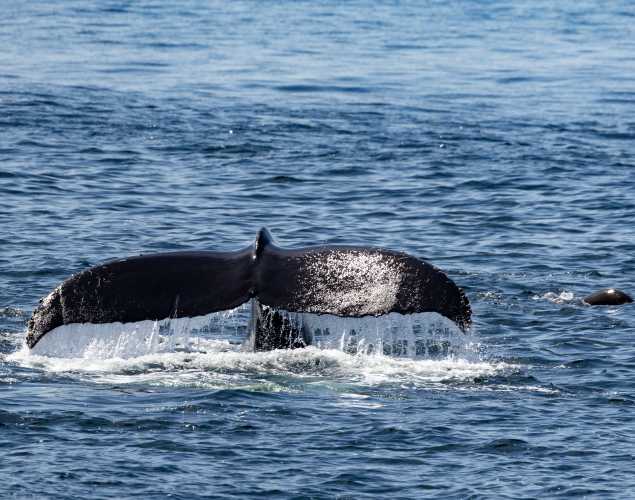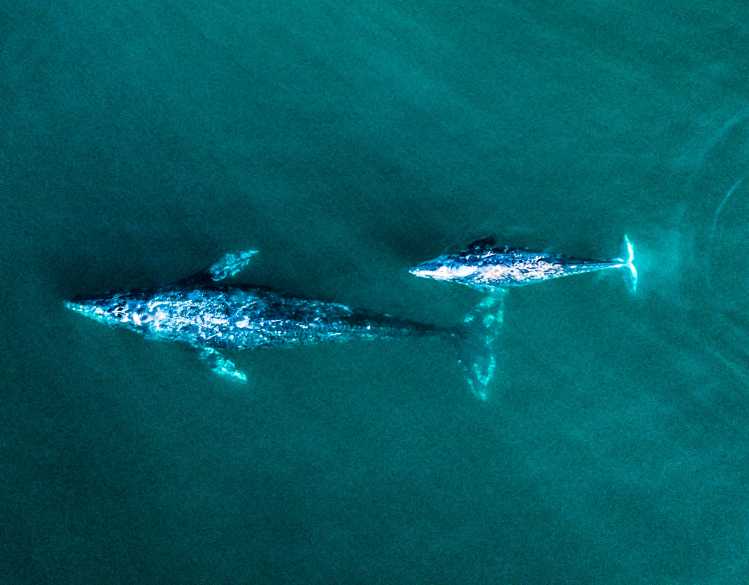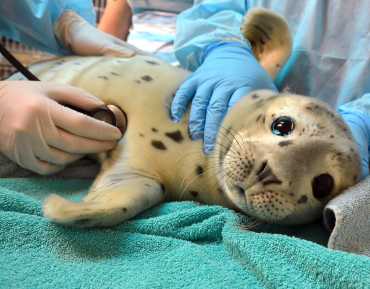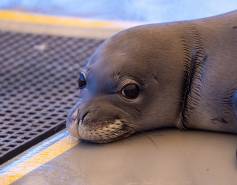
How Do Whales Sleep? And Other Whale Trivia
- Species conservation
- Natural history
You already know whales are majestic creatures, but how well do you know your whale facts? From how whales sleep to what their groups are called, take a deep dive into this trivia. Plus, see how you can be part of critical conservation efforts to protect these animals.
Ready to put your knowledge to the test? Click “Show More” to reveal the answer and more facts about whales.

How do whales sleep without drowning?
Whales sleep by “turning off” one half of their brain to rest while the other half remains alert.
This is because as air-breathing creatures that live in the ocean, whales have adapted to be voluntary breathers, which means they consciously control their blowholes. Because whales must maintain awareness to breathe, they “turn off” half of their brain to rest while the other half stays alert to prompt their next breath.
In this state of half-consciousness, some whales will swim slowly while others will rest motionless along the surface. Others, like sleeping sperm whales, will float vertically in groups just under the surface to enter a deeper rest.
How long can whales hold their breath underwater?
Whales can generally hold their breath for 45 minutes to up to two hours before needing to surface, depending on the species.
Several factors contribute to this impressive feat. For one, whales can take in more air with each breath than humans can. Their red blood cells, the mechanism by which oxygen is transported in our body, also carry more oxygen than humans.
You can imagine that using oxygen wisely is crucial for long dives, so whales have adapted to slow their heart rate and divert their blood flow, and in turn their oxygen flow, away from the surface of their body so that it is conserved for dive-essential organs, such as the heart, brain and swimming muscles.


What is a group of whales called?
Many whale species are social and can be found in groups called pods.
Pods can contain anywhere from two to more than 30 individuals. Generally, smaller whales can be found in larger pods while bigger whales are often found in small pods or traveling solo. Scientists believe whales form pods for social interaction, to protect themselves from predators and to hunt for food collaboratively.
Yes, I want to save a life!

Yes, I want to save a life!
You’ll be giving sick and injured animals the best possible care at the Center’s state-of-the-art hospital. With your gift today, you are giving a patient a second chance at life in the wild.
See Our Latest News
{"image":"\/Animals\/Patients\/Hawaiian monk seals\/2025\/cropped-images\/d-ru28release-exam-at-ke-kai-ola111025photo-by-giancarlo-rulli-c-the-marine-mammal-center-noaa-permit-24359-0-0-1270-992-1764620886.jpg","alt":"","title":"Bird Flu Vaccine Trial Offers Hope for Protecting Hawaiian Monk Seals","link_url":"https:\/\/www.marinemammalcenter.org\/news\/bird-flu-vaccine-trial-may-offer-hope-for-protecting-hawaiian-monk-seals","label":"News Update","date":"2025-12-01 08:13:00"}

Bird Flu Vaccine Trial Offers Hope for Protecting Hawaiian Monk Seals
December 1, 2025
Read More{"image":"\/Animals\/Patients\/Hawaiian monk seals\/2021\/hms-pp08-by-sheila-latta-c-the-marine-mammal-center-noaa-permit-18786.jpg","alt":"Hawaiian monk seal","title":"The New York Times: Inside the Bird-Flu Vaccine Trial for Monk Seals","link_url":"https:\/\/www.marinemammalcenter.org\/news\/the-new-york-times-inside-the-bird-flu-vaccine-trial-for-monk-seals","label":"In the News","date":"2025-12-01 01:00:00"}

The New York Times: Inside the Bird-Flu Vaccine Trial for Monk Seals
December 1, 2025
Read More{"image":"\/Animals\/Wild\/Sea otter\/so-wild-morro-bayphoto-c-brian-simuro-20.jpeg","alt":"Sea otter and pup","title":"Watch a Sea Otter Pup Reunite With Its Mother","link_url":"https:\/\/www.marinemammalcenter.org\/news\/watch-sea-otter-pup-reunite-with-its-mother","label":"News Update","date":"2025-11-14 10:35:41"}

{"image":"\/Animals\/Wild\/Sea otter\/sea-otter-photo-c-brian-simuro.jpeg","alt":"Sea otter","title":"AP News: Baby sea otter is reunited with mother in central California after dramatic rescue","link_url":"https:\/\/www.marinemammalcenter.org\/news\/ap-news-baby-sea-otter-is-reunited-with-mother-in-central-california-after-dramatic-rescue","label":"In the News","date":"2025-11-14 09:46:34"}

AP News: Baby sea otter is reunited with mother in central California after dramatic rescue
November 14, 2025
Read More





